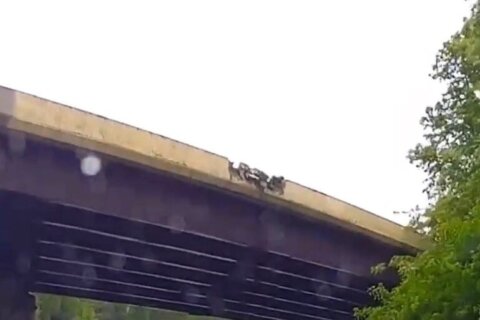WASHINGTON — From Uber and Lyft to Car2Go and Capital Bikeshare, new ways to get around appear to be saving some people money. But while these modes are drawing more people out of their cars, they’re not reducing the number of commuters who use Metro.
“They’re not competing. They’re complementing each other, and we’re seeing people using the systems more, and they’re actually getting out and exercising and leading a healthier lifestyle, as a result,” says Michael Melaniphy, president and CEO of the American Public Transportation Association.
A report released by Tuesday by the American Public Transportation Association studied the impact of new, largely smartphone-linked transportation options on the “transformation of public transit.”
The report found that Uber or Lyft were most likely to be used in place of car trips, rather than traditional transit trips. It found that the largest preference for ride-hailing services was between 10 p.m. and 4 a.m., particularly for what the report referred to as “social” trips after a night out.
“We’ve seen that people who have been out drinking are making smarter choices now,” Melaniphy says. “They’re choosing shared-use mobility. They’re choosing transit, and, if they’ve got options, it’s easier for them to make the smart choice and keep us all safer on the streets.”
Report: Agencies should stop looking at transit modes as ‘silos’
Among the top recommendations in the report is that agencies like Metro or a regional body above them become more focused on helping people get around, rather than being focused on traditional metrics like the total number of rail or bus riders.
London has a setup similar to what the report recommends, with nearly all types of transportation options falling under one umbrella group to focus on reducing the number of trips people take while driving alone and increasing the places people can easily go without their own cars.
“We are learning as a society that we have to stop looking at things in individual silos of bus, rail, car, bike, walking, and it’s all about a system, and that’s how people are starting to really use our entire network now,” Melaniphy says.
“They can take a walk, a shared-use bike, a trolley, a car, a streetcar, a bus, and do all those things in a week. They may do them all in a day,” Melaniphy says.” And so, as we look at these things in a total, holistic way, our systems will work more efficiently and we’ll use our scarce resources in a better way.”
The challenges of change
There are new opportunities to save money through public-private partnerships for things such as paratransit services.
MetroAccess is considering working with companies such as Uber or Lyft to provide some trips to defray fast-rising costs. The report notes Americans with Disabilities Act regulations are not necessarily designed for these kinds of partnerships, which could mean increased oversight or other accessibility requirements for the companies that partner with transit agencies.
“Our structures were set up regulatory-wise based on a paratransit model that we’ve had for 25 years under the ADA,” Melaniphy says. “Now that we’ve got these new choices, we may have to relook at how that model is set up.”
Another structure in place for decades is the fare system for public transit systems such as Metro, MARC or VRE. But with VRE’s new mobile ticketing app and efforts to bring a similar system to the D.C. Streetcar when fares eventually are added, the integration of different ways of getting around could soon become a reality.
Dallas, Texas and Pinellas County, Florida in the Tampa Bay area also are trying to make trips more seamless.
“The next step is moving to a contiguous trip across multiple platforms with all one fare paid through your phone,” Melaniphy says.
Working together to improve commutes
In addition to saving taxpayer dollars through efficiencies, the relatively new options have reduced the number of cars people own.
“Supersharers” — people who routinely used shared modes, such as bikesharing, carsharing (e.g. car2go or Zipcar), and ridesourcing (e.g. Lyft or Uber) — saved the most money and owned half as many household cars (0.72), compared with people who used public transit alone (1.5),” the report found.
Overall, the report emphasized the importance of traditional public transit, especially during rush hour, while outlining the key periods where other options may be better for riders.
“During the morning and afternoon rush, and even midday rush nowadays, anymore, with flexible work schedules, we are the backbone during the workdays and main parts of the weekends,” Melaniphy says. “But then when you’ve got the late nights and things like that, [Uber or Lyft] complement well.”
Concerns remain about equal access to the new services, since people who cannot afford them, or are not familiar with how to use smartphones or particular applications could be left out — even more so if they are not aware of all of the new options available where they live.
In tracking Uber’s “surge pricing,” which is a mix of demand for rides and the number of drivers on the road, the report found that the largest average spikes in D.C. occur weekdays at around 8 a.m. (about 1.3) and on weekends at around 2 a.m. (about 1.2), 4 a.m. (about 1.25) and 8 a.m. (about 1.25).
The weekday spike was mirrored in the six other cities surveyed for the report, even though the report found it relatively rare for people to use Uber or Lyft as part of a regular commute. D.C.’s surge spikes most closely tracked with San Francisco’s, although San Francisco’s surge multipliers were, on average, much higher than those in D.C. for the same times of day.







